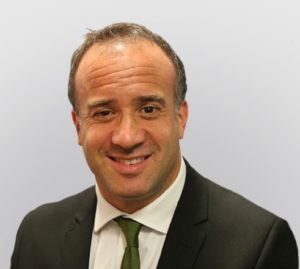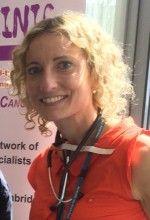We are delighted to announce that the recipients of the 2019 AMEND Research Fund Awards are as follows:
-
MEN1 – Assessing circulating free tumour-derived DNA as a biomarker in the monitoring of NETs
Lead researcher, Dr Miles Levy from the University Hospitals of Leicester NHS Trust is a Consultant Endocrinologist and an Honorary Associate Professor in Endocrinology and Genomic Medicine for the University of Leicester. Dr Levy receives £9,919.74 from the 2019 Nick Fayers Fund for MEN1 Research.
Research summary: Mutations in DNA often occur prior to the formation of a tumour. When these tumour cells break down, the mutation-containing DNA, which is specific to the tumour, is released into the blood stream (called circulating free tumour-derived DNA, ctDNA) and techniques have been developed to isolate ctDNA in a simple blood test that can be taken in a clinic setting. This ‘liquid biopsy’ has been shown to be a sensitive and specific biomarker in a variety of cancers such as breast, lung and bowel, and can provide very useful information, for example by detecting worsening cancer before it is shown on scans and changing alongside changes in the tumour over time. The information gained from genetic analysis of the mutations can also be useful in guiding treatment choices.
The use of ctDNA has not been widely investigated in neuroendocrine tumours (NETs) before. The biomarkers we currently use in patients with NETs, for example chromogranins, have many limitations and it is often difficult to interpret and act on the results. Scans cannot be performed very frequently and are also not perfect therefore there is a need to develop better biomarkers to monitor people with NETs more reliably. Given the results seen in other cancers, we wish to see if ctDNA can be developed as a useful biomarker in people with NETs.
In this pilot study, we will firstly see if ctDNA is detectable in people with NETs and then see if ctDNA levels can track tumour levels over time. This research will be performed in fully equipped laboratories at the Leicester Cancer Research Centre, University of Leicester, under the supervision of Professor Jacqui Shaw, who has pioneered the development of ctDNA as a biomarker in cancer.
The results from this study will then be used to power a larger study to see how useful ctDNA can be as a biomarker in people with NETs. We wish to see if ctDNA can be better at detecting growing tumours than scans and chromogranins and see if ctDNA can be used in the early diagnosis of NETs, which will mean we can offer patients earlier treatment to improve their care.
Alongside this, we wish to see if there is a ‘2 hit hypothesis’ in people with MEN, where a second mutation specific to a person’s tumour occurs on top of the MEN gene mutation, which could explain why some people with MEN develop NETs whereas others do not, and again we wish to see if ctDNA can be used in the early diagnosis and monitoring of these patients, similar to those with NETs without MEN above.
Read the End of Grant Report on this study.
-

-
Phaeochromocytoma and Paraganglioma – Investigating the clinical utility of somatic sequencing in the management of sporadic phaeochromocytoma and paraganglioma
Lead applicant, Dr Ruth Casey is a Consultant Endocrinologist at Cambridge University Hospital NHS Foundation Trust and winner of AMEND’s 2018 Young Investigator Award. Dr Casey receives £10,000 from the 2019 AMEND Research Award.
Research summary: A phaeochromocytoma (PC) refers to a tumour located on the adrenal gland, which releases adrenaline and similar hormones. When a similar tumour occurs outside of the adrenal gland it is called a Paraganglioma (PGL) and can be located anywhere from the skill to the pelvis. Though PC and PGL are relatively rare tumours, they are important because, a) they can affect young patients, and b) these tumours have the potential to behave in a malignant or cancerous manner and unfortunately, at present, there are few treatment options for patients who develop metastatic disease. New and more effective biomarkers are required to predict those patients at risk of developing metastatic disease and to inform current long-term surveillance strategies.
We now understand that a large proportion of PC and PGL are hereditary (40%) and recognising the hereditary basis of these tumours has enabled us to better manage patients with these tumours, and to predict their malignant potential. However, the majority of studies would suggest that in a proportion (~30%) of these individuals, a non-hereditary genetic alteration can be identified in their PC or PGL to account for the development of that tumour. This type of non-hereditary genetic alteration is called a ‘driver somatic mutation’ and identifying these mutations can help i) predict the malignant potential of the tumour, ii) may help identify suitable treatment options for the patient if metastatic disease develops, and iii) can help to relieve anxiety in the family regarding a potential familial risk of developing these tumours. At present, testing for a somatic driver mutation in PC and PGL is not performed routinely in clinical practice in the United Kingdom. The aim of this study is to investigate the clinical utility of somatic mutation testing in PC and PGL in order to better understand the potential benefits of translating this type of testing into routine clinical practice.
Project delayed due to coronavirus
-

-
Adrenocortical Cancer – Targeted DNA sequencing or circulating cell-free DNA from patients with adrenocortical tumours: a strategy towards precision medicine
Lead researcher, Dr Cristina Ronchi is a Clinician Scientist in Endocrine Oncology in the Institute of Metabolism and Systems Research at the University of Birmingham. Dr Ronchi receives £7,563 from the 2019 AMEND Research Award in association with ACC Support UK.
Research summary: Tumours of the adrenal gland are very frequent in the general population with a prevalence of two to three percent and are mostly harmless. In the rare case that they are cancerous (known as ACC), they are highly aggressive. About half of the patients who had an ACC removed see the tumour come back within 2 years and mostly die within 5 years from diagnosis. Recent developments in genetics, biochemistry, and imaging techniques have set new standards for diagnosis and treatment of ACC. Nevertheless, there are still critical unmet clinical needs for patients with ACC:
• No markers are available that can help to predict clinical outcomes at the time of the diagnosis
• Follow-up requires frequent imaging that is expensive, results in increased radiation exposure and cannot always answer diagnostic questions.In my research, I aim to address these needs and to improve the clinical outcome of patients with ACC through the establishment of tailored medical management for individual patients. To this end, I intend to develop a method for the evaluation of small fragments of genetic information (=DNA) released from tumour cells into the blood. To this end, I will collect blood samples from patients with ACC and healthy subjects (volunteers). The levels of the DNA fragments will be correlated with clinical data and standard radiological imaging reports (i.e. tumour load and disease progression) and, eventually, specific alterations will be investigated in DNA fragments. The results will be analysed in order to identify markers that could, i) better predict the clinical course of ACC patients, ii) recognize disease relapses and/or progression, and iii) monitor the response to therapy earlier and better than standard imaging. The same gene panel will also allow us to identify those patients who might benefit in the near future from innovative anti-cancer drugs.
This method might represent a cheap and quick alternative that could simultaneously better distinguish patients with a good or bad prognosis as well as improve the monitoring of the disease. Due to the rarity of ACC and generally low circulating quantities of these DNA fragments, no studies were able to demonstrate the clinical utility of this method until now. I have access to one of largest series of well-characterized ACC patients in UK and to cutting-edge technologies, making me the ideal person to perform these analyses. This study is intended to obtain data that will serve to underpin further recruitment of samples within UK and Europe and major funding applications.
Read the End of Grant Report on this study
-

-
SDH Syndromes – Is there a genotype-phenotype correlation in SDHB that can guide surveillance screening?
Dr Scott Akker, Consultant Endocrinologist from St Bartholomew’s Hospital in London receives a small grant of £1,000 towards this project.
Research Summary: We would like to investigate whether certain ‘types’ of SDHB gene changes make it more likely that a person will develop a phaeochromocytoma/paraganglioma (PCC/PGL); and also whether these are more likely to spread. We propose to gather scans and gene test results from 500 SDHB patients and their families from all round the UK, analyse the scans closely and calculate whether there is a link between certain gene changes and the likelihood of forming a PCC/PGL. This will help us to target NHS resources better and to improve clinical care for those most at risk.
Project delayed due to coronavirus
-

